For discerning visitors who are not satisfied with the city’s flashy attractions, there are some “hidden” places in New York that deserve their attention. Let’s dig into some secret places and explore them.
The hidden subway station under City Hall

The New York City subway has long been the country’s most comprehensive transportation system, and now it even lets you travel back in time. The impressive subway station below City Hall has been inactive for more than 65 years, since it closed on December 31, 1945. The station is an underground architectural masterpiece, with high vaulted ceilings covered in antique tiles and glass skylights, which flood the space with natural light from above. The place has been sealed off like a time capsule ever since, but you can see it with your own eyes (only from inside a subway car). Take the 6 line to the Brooklyn Bridge/City Hall station (the last stop if you’re heading south), but don’t get off. The train will go around the loop of City Hall station and give you a view of the one and only inaccessible location. Until recently, passengers had to exit the train at the Brooklyn Bridge/City Hall station before it made the turnaround, and only those attending special events or tours sponsored by the MTA and the Transit Museum could see this gem.
The Berlin Wall in New York

Tucked away in a small square in Midtown, Paley Park, at 520 Madison Avenue is a unique piece of history. Five sections of the Berlin Wall, totaling 3.6 meters high and 6 meters wide, have been placed here since 1990. The stunning work of German artists Thierry Noir and Kiddy Citny cover the western side of the wall. The eastern side remains a blank concrete slab, a reminder of the oppressive political regime in the former East Germany. At first glance, this artefact appears to be just another public mural that goes largely unnoticed by office workers and passers-by sitting in the park on their lunch break.
The whispers in Grand Central Terminal
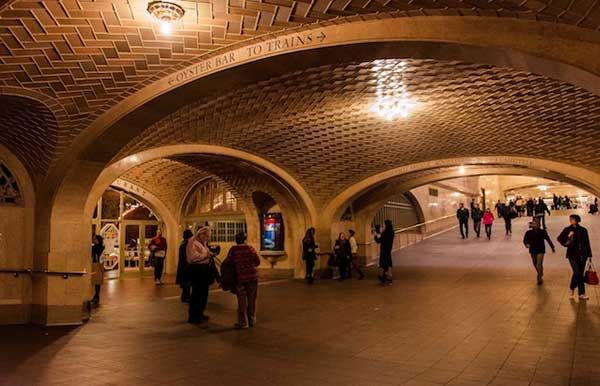
A shared secret of Grand Central Terminal is that Franklin Roosevelt had his own underpass that led to the Astoria Waldorf Hotel. The Whispering Gallery is perhaps a more romantic secret of the place. The arched corridor, located in front of the Oyster restaurant, has a mysterious sonic quality. When two people stand diagonally across the arches and whisper, they can hear each other’s voices broadcast through the arches. Today, Whispering Gallery is very popular for whispered marriage proposals.
The Garden of Stones at the Museum of Jewish Heritage

The Garden of Stones opened to the public on September 17, 2003 in the grounds of the Museum of Jewish Heritage. This living memorial garden continues to inspire in new ways. The unique garden with trees growing inside stones was planted by artist Andy Goldsworthy, Holocaust survivors and their families. The contemplative space is visible from almost every floor of the museum. Over time, the trees will grow and break the rocks apart and form a dynamic landscape. Access to the garden is only possible through the museum.
The shelter under the Brooklyn Bridge

In 2006, city inspectors stumbled upon a hidden chamber inside the Brooklyn Bridge, located just below the bridge’s entrance ramp in Lower Manhattan. The room was stocked decades ago with items for survivors of a nuclear bomb attack, including blankets, medicine, water containers and about 352,000 crackers. The boxes of supplies were stamped with dates 1957 and 1962 indicating the shelter was in use during the height of the Cold War. It was then sealed away and forgotten. For security reasons, city officials had kept the chamber’s location a secret, and the more than 150,000 pedestrians who cross the bridge each day had no idea it even existed.
Scent of London on Pomander Walk
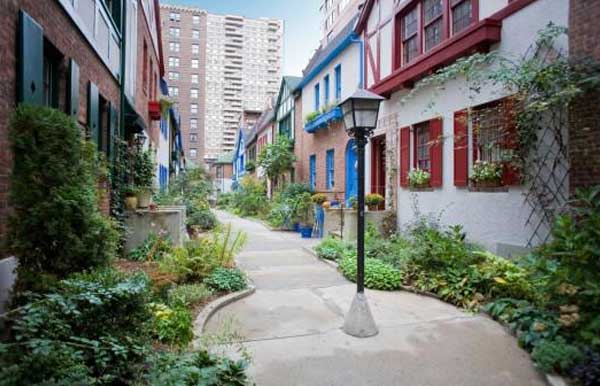
Twenty-seven buildings that look like Tudor-era houses, with colorful doors, shutters, and wood frames, line this pedestrianized street tucked away on the Upper West Side, almost entirely from the view of passers-by. Pomander Walk, which was modeled after an old London street and as a stage for a play, was designated a city landmark in 1982. Surrounded by buildings towering hundreds of meters above their rooftops, the area is now a pedestrianized area and a peaceful haven from people and the noise of cars. You can’t gain access to any of the buildings unless you have a key or know someone who does, but it’s definitely worth a look and a souvenir photo for your collection. Pomander Walk is located at 94th and 95th Streets on the stretch between Broadway and West End Avenue.
Astor Row
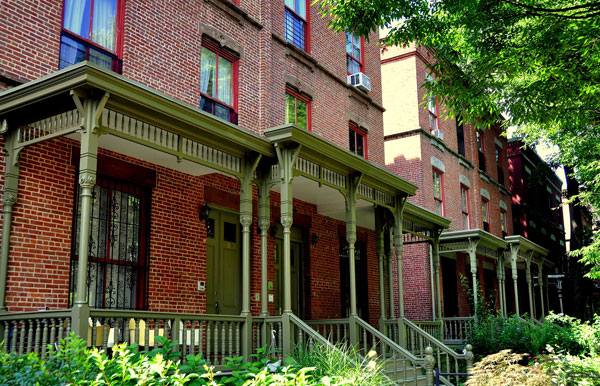
Astor Row is a stretch of 130th Street between Fifth Avenue and Lenox Avenue in Harlem, Manhattan. More specifically, it refers to the semi-detached row houses on the south side of the street. These were among the first speculative townhouses built in Harlem, and their design is very unusual. The houses have courtyards and wooden verandas on the street side, a uniqueness in Manhattan. Astor Row homes originally rented for $1,100 a year, and were so popular that there was a years-long waiting list for people who wanted to live there.
Slave Galleries of St. Augustine
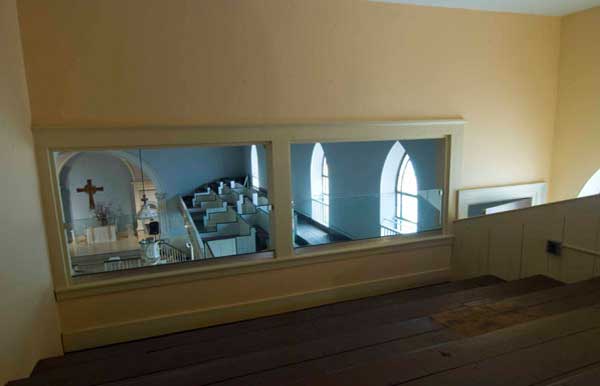
Inside St. Augustine’s Episcopal Church on the Lower East Side is an unlikely reminder of the racial segregation that existed in New York City. Narrow staircases lead to two hidden spaces, located behind the portico, where African-American worshipers could watch church services without being seen. The rooms, which were informally known as the “Slave Galleries”, were built in 1828. The fugitive 19th century politician, Boss Tweed, reportedly hid in the Slave Gallery to attend his mother’s funeral. The neglected and forgotten place for decades, a shameful reminder of the past of St. Augustine, was recently renovated and opened to the public (by appointment only) in 2009.
Avenue Atlantic Tunnel
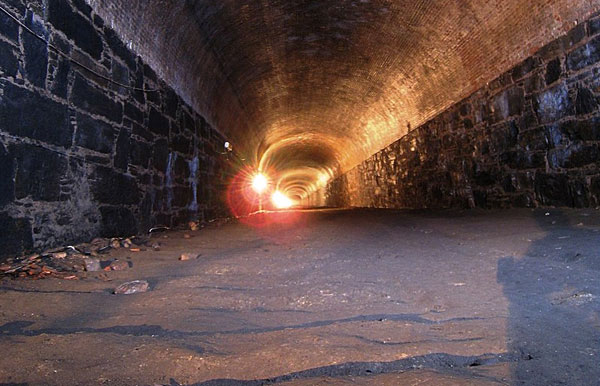
The Avenue Atlantic Tunnel is officially the oldest subway tunnel in the world. This tunnel was built in 1844 under a busy street in the city of Brooklyn. The Atlantic Avenue Tunnel is half a mile long and houses two standard railroad tracks. The tunnel was abandoned in 1861 and rediscovered in 1980. At one point, visitors could see the tunnel for themselves, but tours of the underground space are no longer available.
A Lenin in New York

At 250 East Houston Street in Lower Manhattan is a 130-unit apartment building built in 1989, the year of the fall of the Soviet Union, called “Red Square”. On the roof there is a large clock which covers the water tower and the elevator roof. Two faces of the clock, south and west, can be seen from the Brooklyn Bridge, the World Trade Center, and Broadway. But the strange things don’t stop here. The rooftop is also dominated by a statue of Lenin with his right hand raised above the city skyline. Lenin stands directly across from Wall Street, emblem of capitalism, and the Lower East Side, home of the socialist movement. The statue is fully visible from the street, but the rooftop is closed to non-residents.
The Smallpox Hospital on Roosevelt Island

Smallpox Hospital is an abandoned hospital located on the southern tip of Roosevelt Island. The 100-bed hospital opened in 1856, when the area was known as Blackwell’s Island. A century after opening, the hospital closed, and the building eventually fell into decline. It was listed on the National Register of Historic Places in 1972 and designated a New York City Landmark four years later, the only landmark in ruins in the city. Following the completion of the ongoing $4.5 million renovation, the ruins of the Smallpox Hospital will once again open to the public.
The Mecca of graffiti
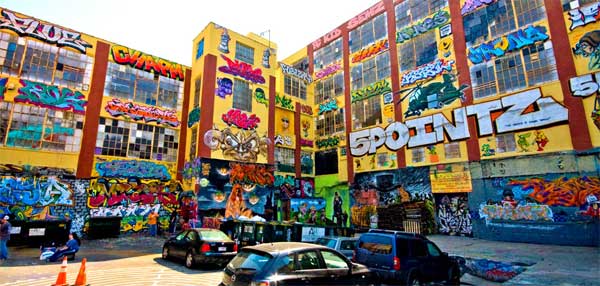
At 45-46 Davis Street in Queens, Long Island City, is an outdoor art gallery that is considered the “Mecca of Graffiti”. At 5 Pointz, graffiti artists from around the world have painted colorful masterpieces on the walls of the 19,000 sq m building. The New York City Council, on October 9, 2013, unanimously approved a $400 million plan to demolish part of the buildings and rebuild a 1,000-apartment complex.
The Freedom Tunnel, Riverside Park Tunnel

The Freedom Tunnel is an Amtrak railroad tunnel under Riverside Park in Manhattan. It was named after graffiti artist Chris Pape who used the walls of the tunnel to create some of his most notable artwork. Today the tunnel is used by Amtrak, but is one of the popular spots for exploring and graffiti in the city. To get there, follow this guide. Be careful, because the tunnel is in operation.
Elevated Acre
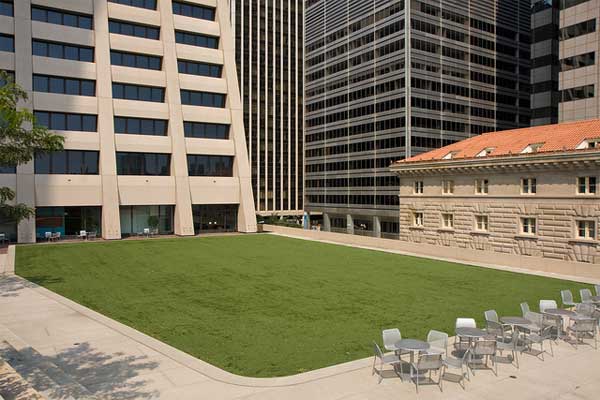
On the north side of the 55 Water Street tower is a 15-story wing with a sloped facade and terraces overlooking the river. The larger terrace is a privately owned public space known as the “Elevated Acre”. The site stands approximately 9.1 meters above street level and is accessible via escalators from the sidewalk on Water Street. The venue is open to the public unless it is being used for a private event.
The tunnels under Columbia University

Beneath the Columbia University campus in Morningside Heights, a series of underground tunnels connect various school buildings. The tunnels, which are only a few meters wide, are believed to date back to the asylum that once stood on the site of the university. For security reasons, access to anyone inside the university is prohibited. The Columbia Tunnels have always been a city secret that holds much darkness, mystery and great history.



